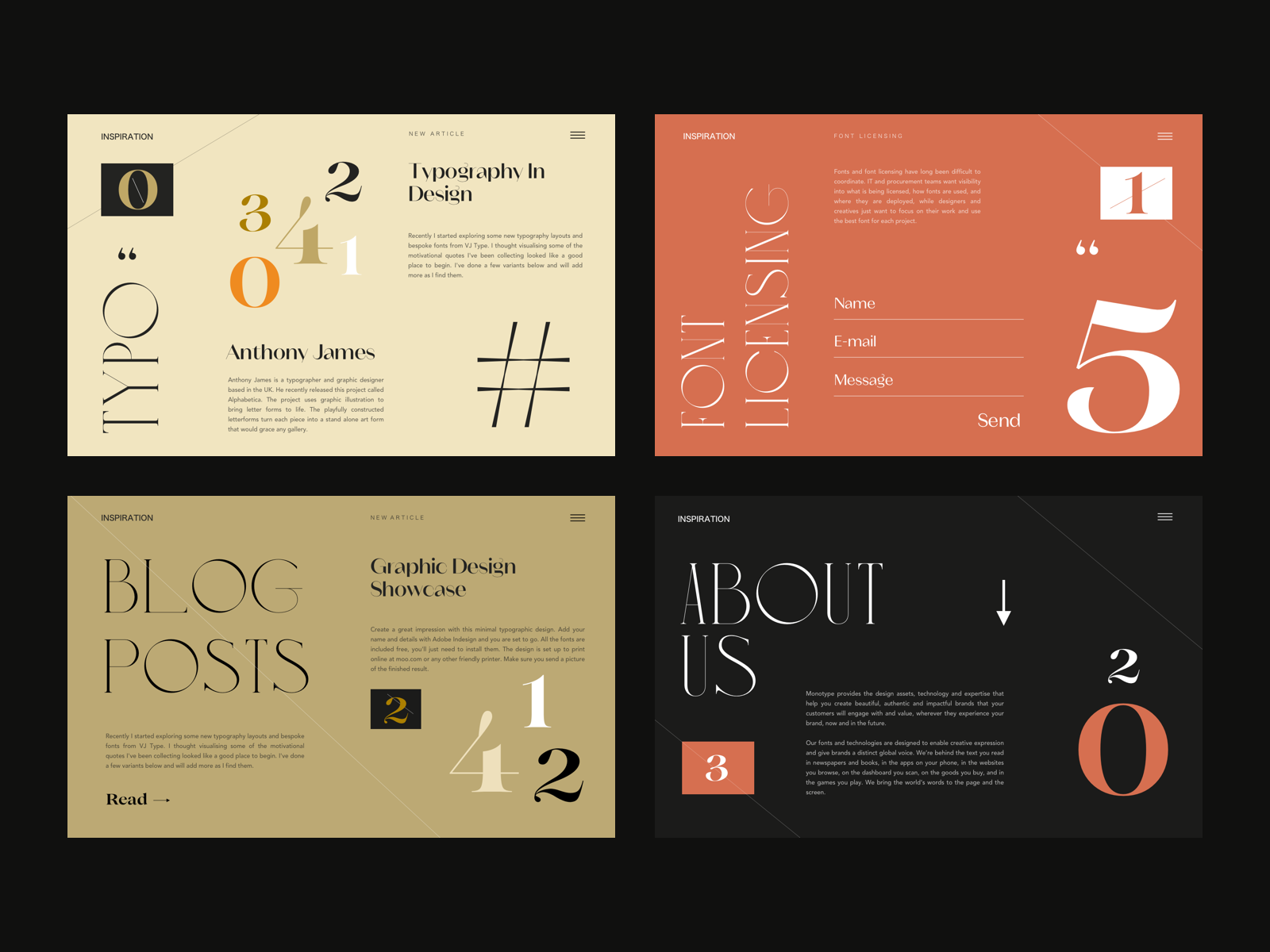Pulse of Information
Your source for the latest insights and updates.
Type Less, Say More: Typography Secrets for Web Brilliance
Unlock the secrets of impactful typography! Learn how to boost your web brilliance by saying more with less. Dive in now!
Understanding Hierarchy: How Typography Guides User Experience
Understanding hierarchy in design is crucial for creating an effective user experience, and typography plays a vital role in this process. The arrangement and style of text can significantly guide users' attention, helping them to navigate content with ease. By utilizing elements such as font size, weight, and color, designers can create a clear visual hierarchy that directs the user's focus to essential information first. For example, a larger, bolder header at the top of a page establishes a clear starting point, while smaller body text delivers supporting details. This intentional use of typography not only enhances readability but also communicates the importance of various elements on the page.
Moreover, typographic hierarchy fosters a more engaging experience by providing visual cues and a sense of structure. Utilizing different typefaces for headings, subheadings, and body text can create a natural flow that guides users through the content. For instance, an ordered list can effectively break down complex information into digestible parts, making it easier for readers to scan and absorb key points. When users encounter well-structured typography, they’re more likely to stay on the page longer, which ultimately improves retention and comprehension of the material presented.

The Psychology of Fonts: What Your Typeface Says About Your Brand
The choice of fonts plays a critical role in shaping the perception of your brand. Different typefaces evoke various emotions and connotations, influencing how consumers feel about your products or services. For instance, a bold, sans-serif font can communicate strength and modernity, while a classic serif font may evoke tradition and reliability. Understanding the psychology behind typefaces allows you to strategically align your brand's visual identity with its core values and mission, ultimately enhancing your connection with your target audience.
When considering the psychology of fonts, it's essential to recognize that font choices can significantly impact brand recognition and customer loyalty. Research shows that people often make judgments based on visual elements within seconds. Therefore, selecting the right typeface can make a lasting impression, helping to differentiate your brand from competitors. For example, tech companies may lean toward sleek, contemporary fonts to embody innovation, while artisanal brands might select more textured, hand-drawn typefaces to convey authenticity and craftsmanship. Ultimately, the right font can serve as an unspoken voice for your brand's personality.
10 Typography Mistakes to Avoid for a Cleaner Web Design
Typography plays a crucial role in web design, influencing not just aesthetics but also user experience. One common mistake to avoid is using too many different fonts. This can lead to a cluttered appearance and distract from your content. Stick to two or three complementary fonts to maintain visual harmony. Additionally, failing to consider line spacing and letter spacing can make text difficult to read. Ensure that your body text has adequate line-height to promote readability, especially on mobile devices.
Another typography mistake is neglecting the importance of hierarchy. Users should easily navigate your content, understanding which elements are most important. Use font sizes, weights, and colors strategically to create a clear visual hierarchy that guides the reader’s eye. For instance, headings should stand out significantly from paragraph text. Lastly, be cautious with all-uppercase text; while it may convey emphasis, excessive use can lead to readability issues. Remember, a cleaner web design ultimately enhances user engagement and retention.